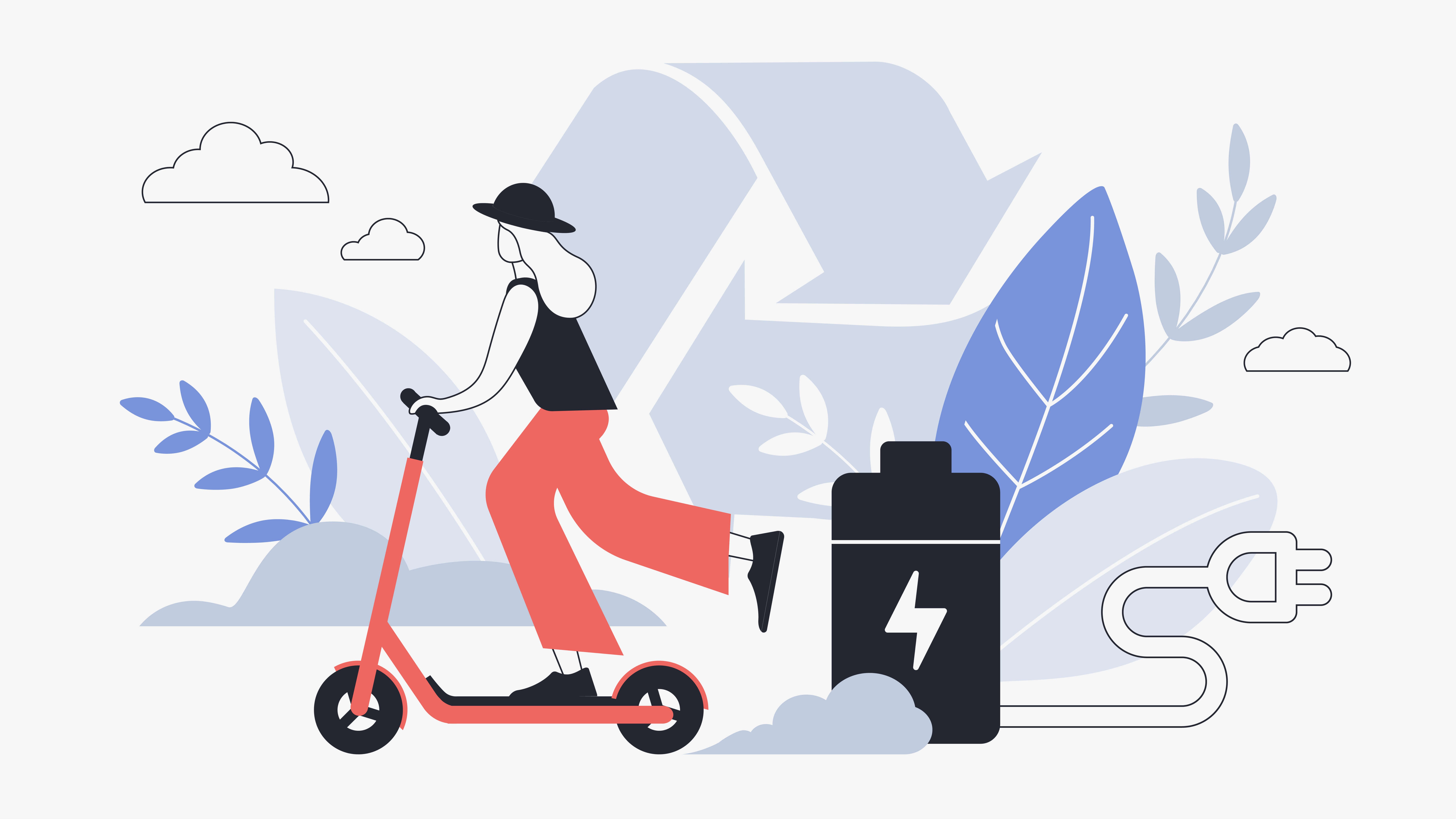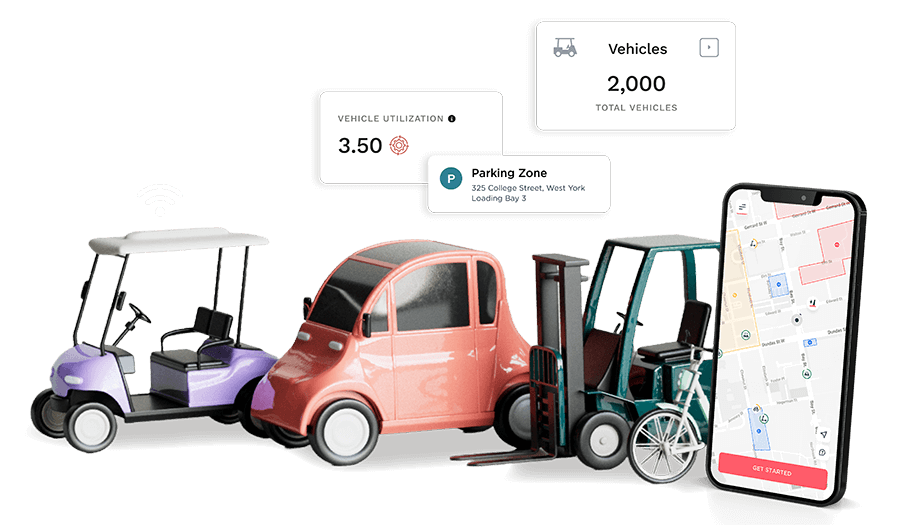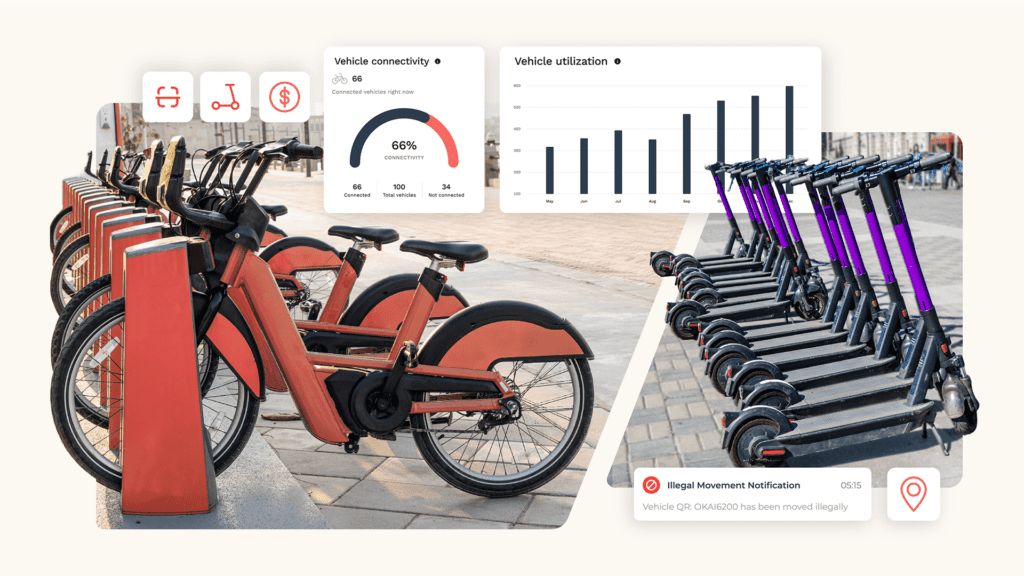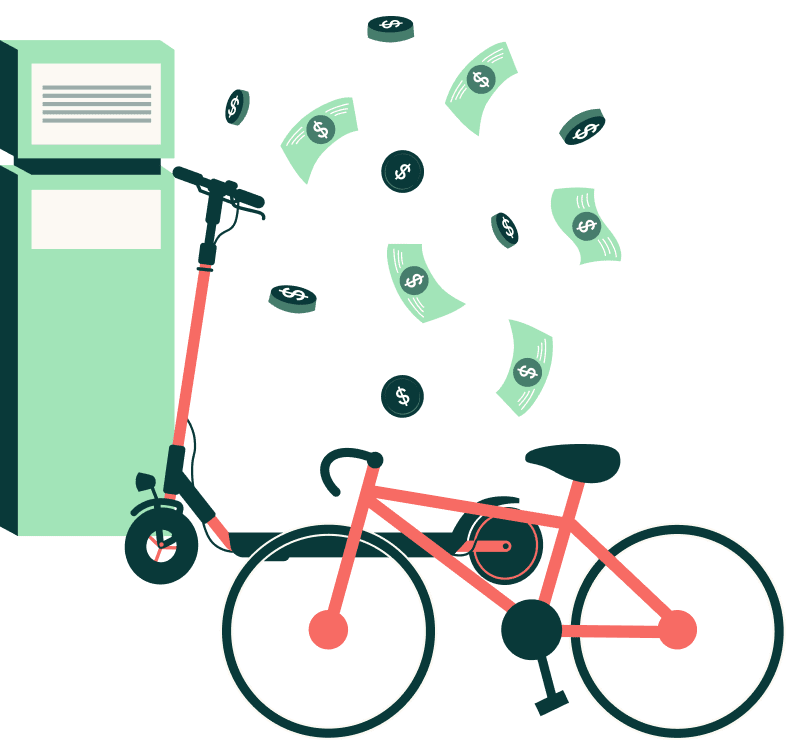The world is going electric and lithium-ion batteries are the key technology powering various industries, micromobility included.
We know that electric vehicles contribute to sustainable cities by replacing traditional fossil-fueled transport, but what happens when these vehicles, and the batteries within, reach their end of life?
We connected with Max Hickey, Business Development Associate at Li-Cycle, to discuss how micromobility operators should handle their end-of-life batteries. Read on to learn about urban mining, battery supply chain logistics and how shared mobility companies can work with battery recyclers like Li-Cycle toward a safe and circular economy.


Did you know: when a battery no longer functions as originally intended, there’s nothing inherently wrong with the chemicals that make up the battery itself. When the materials within are extracted and refined, they will go on to power brand new technology.
What is urban mining? How does it impact the micromobility space?
The shortage of battery materials is becoming a real pain point and an area more people are focusing on as we seek to adopt electric vehicle use. Urban mining is a sustainable alternative to traditional mining, which reduces our dependency on the earth’s critical, finite resources.
Urban mining ensures we are using production scrap and spent Lithium-ion batteries as a resource. Li-Cycle’s process extracts critical battery materials such as lithium, cobalt, nickel, and manganese directly from end-of-life batteries, and reintroduces them back in the supply chain.
What process is used by Li-Cycle to recycle and recover battery materials?
Li-Cycle uses a wet-chemistry process, as opposed to a high-temperature process, which is what has been traditionally used by other recyclers in the industry. The hydrometallurgical (wet chemistry) process recovers up to 95% of critical materials with minimal solid and water waste.
Li-Cycle’s closed-loop process also ensures all materials are either recovered and returned to the battery supply chain or sent for further processing or battery production.
Are there ways to prolong the lifespan of Lithium-Ion batteries?
The lifespan of a Lithium-ion battery depends on various factors, but we can make them truly sustainable products by ensuring they are recycled when they reach the end-of-life stage.
In an operational sense, battery charge cycles should stick between 20-80%. Avoid draining batteries to zero and minimize hot and cold exposure. Most manufacturers recommend 10-40 degrees Celsius as the optimal operating temperature range (with maximums of -10 to 50/5 degree Celsius). Tracking the exposure and behaviour of each individual battery over its lifespan will aid in assessing their condition for reuse or second life.

Tip: Use a colour system to track battery health. Green – orange – red. Green meaning great condition and fit for second life, orange meaning minor issues and potentially fit for second life, red meaning unfit for second life. Li-Cycle can aid operators in determining whether batteries are fit for reuse or recycling.
How should operators store damaged and end-of-life batteries?
Safety is a priority for this industry so if there is even a small risk, take the conservative approach when dealing with damaged, defective or recalled (DDR) lithium-Ion batteries.
A damaged battery should be immediately expedited for recycling. It is important to have adequate fire suppression systems in place at your storage site to mitigate the risk from any event. We also recommend working closely with the fire department in your area and to notify them if you have damaged lithium-ion batteries on site.
Original equipment packaging with fire suppressant materials is a good short-term storage solution. Always make it clear and visible within your warehouse where these batteries are and store them at a safe distance from any machinery. Lastly, make sure your team is aware of the hazards and how to handle these batteries with care.
What is the collection process from operator to recycler?
Once a battery has reached its end-of-life, that battery should be safely stored and segregated based on its condition. Shipping logistics are one of the biggest costs associated with recycling so it is common for customers with smaller sites to consolidate their material to increase the shipment size. A recycling company will provide a quote based on the quantity, type and condition of the batteries.
Li-Cycle provides climate-controlled storage solutions and logistics for high voltage batteries used in a variety of applications, including electric vehicles and energy storage. Their operations team is very hands-on and works closely with operators to guide the collection process.
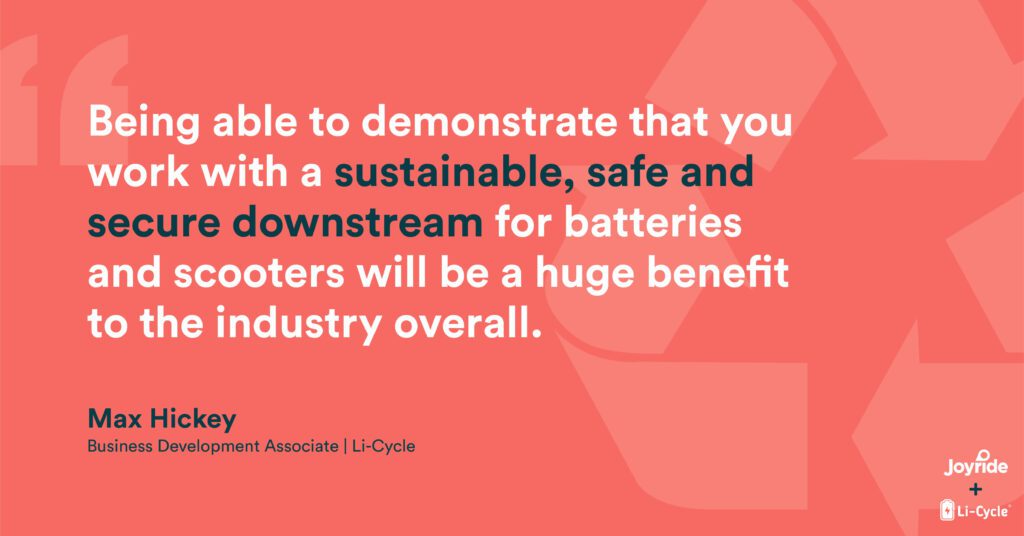
Are there any special “eco-certifications” to be attained by a micromobility operator for implementing a battery recycling program?
Currently there aren’t specific certifications for micromobility, but operators should partner with certified (R2 or e-Stewards) recyclers and ensure they receive a Certificate of Recycling (COR).
As the micromobility industry continues to develop, operators will be held to a higher environmental standard so more reporting is always positive. Being able to demonstrate that you work with a secure and sustainable recycling downstream for batteries and scooters will be a huge benefit to the industry overall.

Tip: Planning ahead means competitive edge. Operators who come to the table with thought-out logistics for their end-of-life hardware will likely have a competitive advantage in permit applications to new cities.

How can micromobility operators and recyclers work together toward a sustainable battery supply chain?
Industry-wide collaboration is required to achieve our goals for a sustainable supply chain. Li-Cycle advocates for a circular economy to maximize the utility of battery materials. This starts with increasing the collection of scooters at their end-of-life. Micromobility operators can form partnerships with recyclers to track battery health and make determinations for the reuse and recycling of vehicles and batteries.
If operators commit to high recycling rates, recyclers can be held accountable to high recovery rates for battery materials.
Where can operators find regulatory requirements for battery disposal in their area?
Micromobility operators should refer to official government websites to understand regulatory requirements in their province, state, or country. The following are two examples of the information governments provide: https://www.ontario.ca/laws/regulation/r20030 https://www.epa.gov/recycle/used-lithium-ion-batteries

Did you know: Battery recycling is hyper efficient. Li-Cycle’s Spoke & Hub Technologies – a low cost, safe, and environmentally friendly process – can recycle all types of lithium-ion batteries, with an unparalleled recovery rate of up to 95% of all materials.
Learn more at the Joyride Academy Experience
The first-ever Joyride Academy Experience will take place on June 1 as part of Micromobility Europe. Like our conversation with Li-Cycle, we will present in-depth perspectives and tangible, how-to advice on the biggest priorities in the micromobility space. Read more about the workshop, and how to join us, here.
Get in touch with the Li-Cycle team to learn more about their full-service solution for recycling lithium-ion batteries. For more information on growing your micromobility business and optimizing your current operations, contact us today.

